So, you’ve started a business: check. Hired a team: check. Have a steady workflow up and going: check and check. Stressed because you don’t know what the next step is for your business: check.

Now, pause and throw out that checklist. It turned into a bummer — fast. Every business has room for improvement, whether your company has thousands of workers or just you. Here are the tips you need to take your business to the next stage of growth.
16 Business Tips You Need to Read
- Build a brand
- Understand your target audience
- Be consistent
- Focus on your team
- Be accessible to your customers
- Stay organized
- Be transparent
- Stay updated on intellectual properties
- Update social strategy
- Get your customers involved
- Experiment
- Track your engagement
- Know your competitors
- Focus on customer experience
- Keep going
1. Build a brand
Who are you and what does your business do? Establishing a brand identity is essential to every business and key to framing social content.
Because a brand’s social media feeds are meant to attract existing and new customers, creating engaging content catered to them is key. Once you get to know what your target audience is interested in and what they love about your products, incorporate those ideas into your content.
- Additional reading: Corporate Identity Ultimate Guide
2. Be willing to learn more
As a business becomes more successful, it’s easy to get stuck in the complacency of success and experience a plateau. Commit to lifelong learning and invigorate your team. Here are a few ideas on how to do that:
- Catch up on the latest competitive research.
- Hold a company-wide Adobe Cloud Q&A session.
- Listen to podcasts on your morning commute. Check out this list of podcasts every entrepreneur should listen to.
- Read about your industry and profession
- Host team trainings
- Find a mentor
- Additional reading: Entrepreneurship Courses and Certifications
3. Understand your target audience
Defining a target customer helps you find and market to a specific audience. It can be tough to know exactly how to create a persona, but articles like this one can aid in the process. Perhaps you are catering to “Educator Elise” or “Sales Sam.” What’s unique about them?
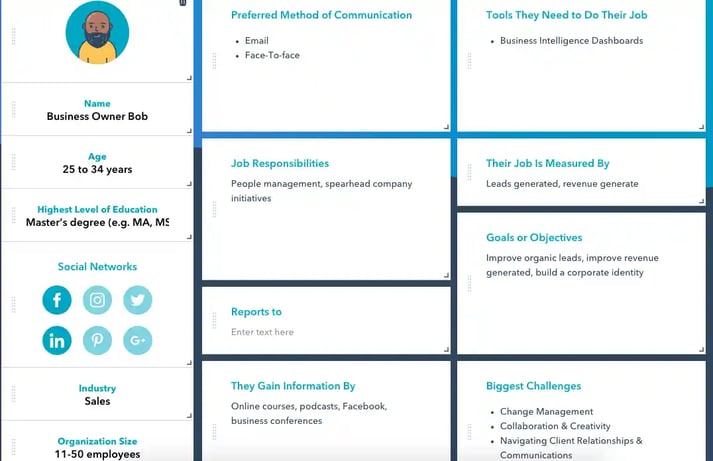
For example, “Business Owner Bob” is a CEO whose biggest challenges are improving revenue growth and organization. How can your company help his needs?
4. Be consistent
Being a business that’s inconsistent with its message, products, and goals can lead to a loss of revenue. In 2018, businesses with consistent branding increased revenue by up to 23%. Staying relevant and holding your business accountable will build customer trust.
For example, World Wildlife Fund’s branding on social media is consistent across their website, Twitter, and Instagram. Notice how their content is optimized depending on social channel, but still connects to their mission and panda mascot.
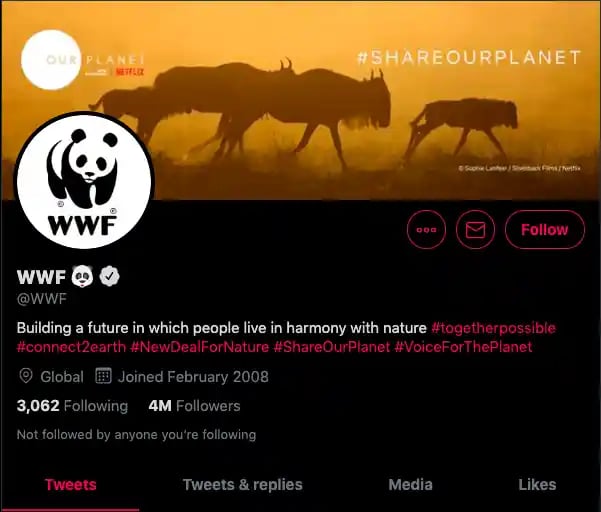
Image Source: Twitter
The hashtags in WWF’s Twitter bio really show how the nonprofit uses Twitter to expand engagement and reach. The hashtags also show the account’s goals, such as #VoiceForThePlanet. Plus, the panda emoji is the cutest thing ever, and it connects to the vibe on Instagram.
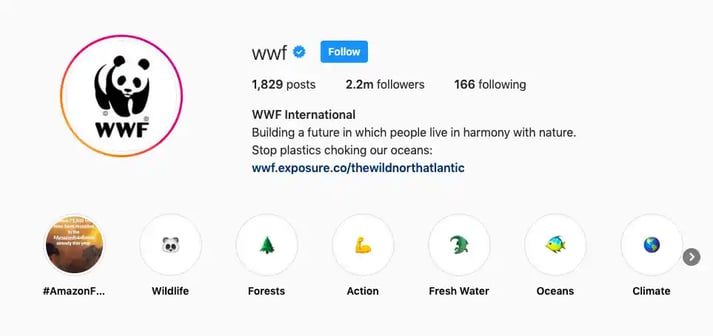
Image Source: World Wildlife Fund
WWF uses Instagram highlights to its advantage. The consistent look of using emojis as highlight covers and having the categories sync with the website’s mission is an excellent use of cross promotion on social media.
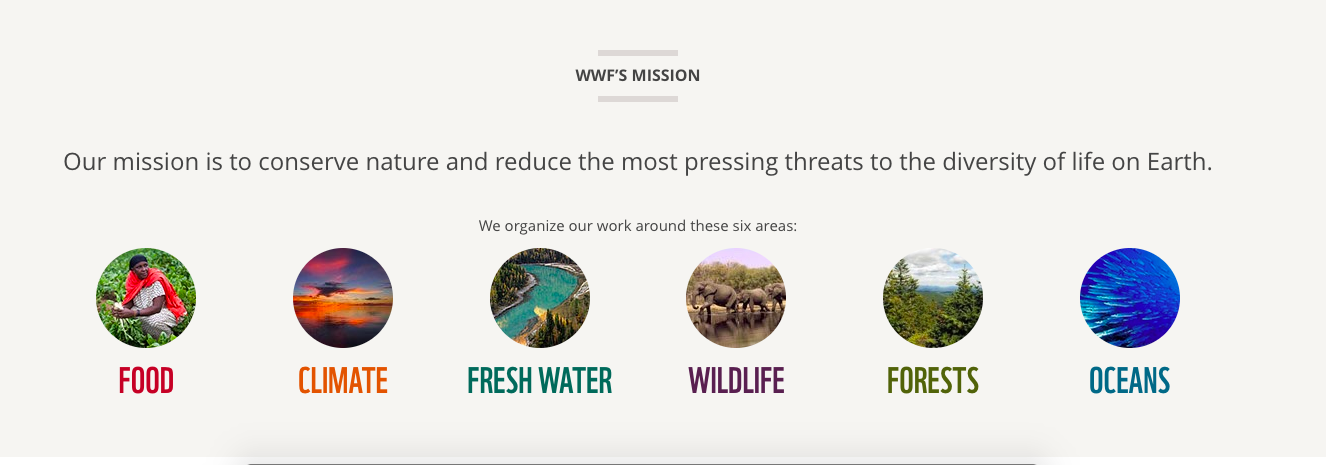
Image Source: World Wildlife Fund
The branding across three platforms makes WWF have an engaging and informative social media presence. The organization helps browsers explore with ease and navigate towards categories they are interested in.
- Additional reading: Power of Consistency
5. Focus on your team
Burnout is real. In fact, 61% of employees feel burnout at work. It doesn’t mean your product isn’t worth it anymore, but with a team tirelessly working towards bettering something they believe in, burnout is almost guaranteed to happen sooner or later. Something as simple as staff bonding days can lighten morale, give your team a chance to get to know each other better, and increase productivity.
For example, did a product designer come up with an awesome mock-up for their most recent project? Give them a shout out in an email and encourage them to keep up the good work. Another way to encourage team morale is to dedicate a regular meeting in which different team members present their favorite work hacks.
Food always draws a crowd, and if you have a team of foodies, try BYOB (Bring Your Own Bagel) Mondays, where an hour is dedicated to having breakfast together and blowing off steam before the week starts. (Remote members can virtually Skype or Zoom in!)
- Additional reading: Increase Team Empowerment
6. Be accessible to your customers
If you’ve ever called a support team, you know how important providing great customer service is. A customer can instantly cut ties with a business over unsatisfactory customer service.
An employee at Zappos once talked on the phone with a customer for 10 hours, upholding his employer’s devotion to the customer. Making sure your customer is satisfied through and through is your number one priority.
Incorporate great customer service into your social strategy. Engaging with customers about their concerns and praise builds brand loyalty.
- Additional reading: What Good Customer Service Looks Like
7. Stay organized
One challenge most startups run into is disorganization. Don’t fall into the trap of using too many tools — or too few. If you haven’t gone paperless yet, now is the time to try. Consolidate your tools, your strategy, and hit the ground running.
To get started, adopt a tool or two, like a CRM, collaborative project management software, or time-tracking tool. Choose a tool that enables every employee to easily find documents and communicate with their colleagues.
- Additional reading: Small Business Organization Strategies
8. Be transparent
Not every business secret should be a secret. If a customer wants to know the specs of your product, tell them. Being transparent with customers builds trust (94% of consumers cite transparency as their biggest reason for brand loyalty), could generate organic leads, and makes you stand out among competitors who aren’t as transparent.
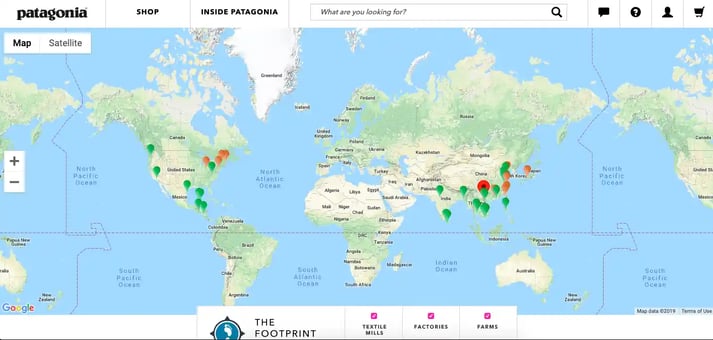
Image source: Patagonia
For instance, outerwear brand Patagonia took the charge on letting customers know the company’s supply chain routine, in an effort to reduce their carbon footprint. Their “Footprint Chronicles” page shows every textile factory, farm, and mill Patagonia uses and their impact on the earth.
- Additional reading: Why You Should Be Transparent
9. Stay updated on intellectual property
What’s yours is yours and deserves to stay that way. Making sure trademarks and copyrights are in place isn’t the most fun part of keeping a business afloat, but it’s necessary as the digital world grows more crowded.
To check if a trademark is already registered, The United States Patent and Trademark Office (USPTO) website has an online database you can search. Here’s a secondary global database from the World Intellectual Property Database.
- Additional reading: How to Protect Your IP
10. Upgrade social strategy
Social media is changing all the time. It’s important to keep up with those trends, especially to attract younger target audiences looking for the next new thing. Apps like Buffer, Hootsuite, and HubSpot’s CRM schedule posts so you don’t have to do them manually.
Can you imagine shopping for your next bed using Spotify? Mattress brand Casper can. Not only do they have ads on my favorite podcasts, they also found an awesome way to use different social sites — other than the big three: Twitter, Instagram, and Facebook — to maximize their audience reach, and it works.
If you can’t sleep, you can easily open Spotify and listen to the Casper sleep channel. Consumers might be curious to see if their mattresses feel as good as their favorite songs or lullaby music.
Similarly, comforting videos of dogs or montages of calm waves to the backdrop of soothing music can be the fireplace app you need to help lull you to sleep. YouTube being free means their videos are accessible to those who might not want to pay for a Spotify subscription.
- Additional reading: Proven Social Media Engagement Strategies
11. Get your customers involved
Customers help shape your business. They should be a part of it — and know that they are. Customer appreciation can be shown by using permission marketing and feedback forms, and soliciting positive feedback for testimonials to gain more leads.
Twitter sends its users a “Twitterversary” email every year on the date their users make their accounts. It’s a fun and simple way to acknowledge their customers and make them feel unique and special, like a birthday.
- Additional reading: How to Create a Customer Centric Marketing Strategy
12. Experiment
How else would you find out what works and what doesn’t? The uncertainty of experimenting with e-commerce, marketing practices, and customer loyalty benefits can seem like too much of a gamble, but by executing a planned “safe” experiment such as, say, a small sale on products to drive purchases, you could find favorable results on sales and brand loyalty.
For example, TikTok recently introduced ads into their app. It was a quiet rollout, due to the spirit of experimentation, but unsurprising. Ads are a known revenue booster for countless websites and apps, and this rollout has since been the segue to fully integrating them into the platform.
- Additional reading: The Importance of Experimentation in Business
13. Track your engagement
This is another instance of “You’ll never know until you do it.” Tracking social engagement gives you an eye into how your target audience responds to marketing campaigns and what performs the best. You’ll also be able to easily track when customers are commenting and replying to social posts. Tools are also out there to assist with this, which saves you time.
For instance, awareness metrics show your current audience as well as a potential one. Consumer metrics show the opinion customers have about your brand and its products.
Some of the top tools for tracking engagement include Google Analytics, Hootsuite, and Later.
- Additional reading: Social Media Metrics that Matter
14. Know your competitors
Running a competitive analysis helps you stay ahead of the curve, whether you’re a startup or a more established business. Always keep the practices of competitors in the back of your mind — especially ones seeing consistent growth in areas you might not have had success in.
The recent “Chicken Sandwich War” is a great example of companies who know their competitors. When Popeyes released their viral chicken sandwich, hoping to dethrone the famous Chick-fil-A sandwiches, Chick-fil-A instantly fired back with their own marketing, indirectly letting Popeyes and other competitors know that they weren’t going down without a fight.

Before analyzing a competitor, make sure to analyze your business’s data to hone in on what you’re looking for and how you measure up to competitors.
- Additional reading: How to Start a Competitive Analysis
15. Focus on customer experience
Customer experience is just as important as customer service. Are your customers satisfied with your product? Are you measuring that satisfaction? Are you brainstorming and working on improvements to keep their satisfaction high? Running a Net Promoter Score (NPS) survey is a great way to measure customer satisfaction.
To run one, survey your customers and use the question, “On a scale of 1-10, how likely are you to recommend our services to a friend?” Then, categorize respondents based on their answers into three categories: Promoters (Answers were 9-10), Passives (Answers were 7-8), and Detractors (Answers were 0-6). Your NPS is the percentage of Detractors subtracted from the percentage of Promoters.
Having a CRM for your business can improve customer experience as well. A CRM automates emails and workflows to help you understand your customer better. Here are a few free CRMs to get you started.
- Additional reading: Customer Experience Guide
16. Keep going
If you believe in your idea and there’s a market for it, keep going. It can seem discouraging when businesses hit a plateau or a loss in revenue for that quarter. However, maintaining a persistent attitude can be the difference between seeing your business come out on the other side or failing. Not every day will be perfect, and that’s okay.
To illustrate, shoe company Adidas lost their footing (no pun intended) in the late 70’s and 80’s, reporting record losses after Nike’s surge in popularity. The company had to redesign its entire structure and connect to its initial purpose — being the best for the athlete — to come back.
For more information on how to elevate your business, check out our ideas on how to improve your marketing strategy.
- Additional reading: 5 Ways to Master Persistence
To run a successful business, you must understand your profession and industry, conduct social and company listening, and push through difficult times These business tips will help you stay ahead of the curve without feeling overwhelmed.

